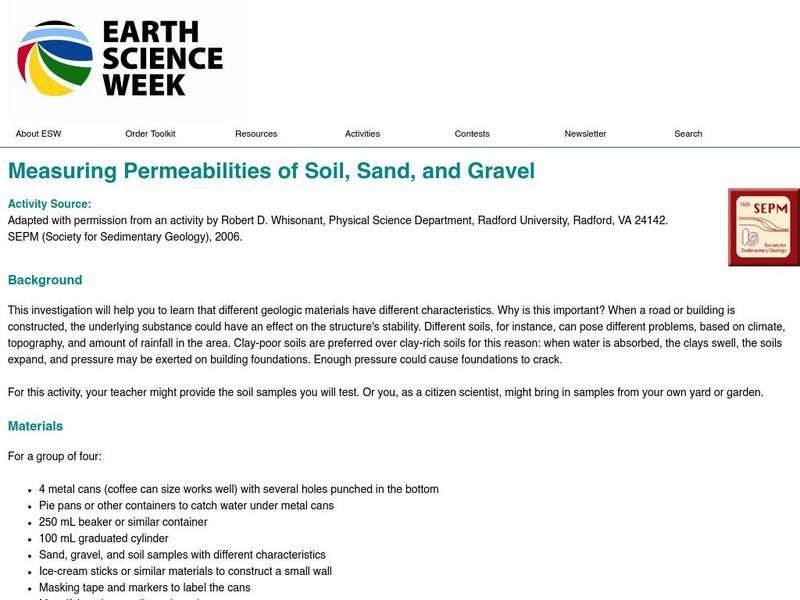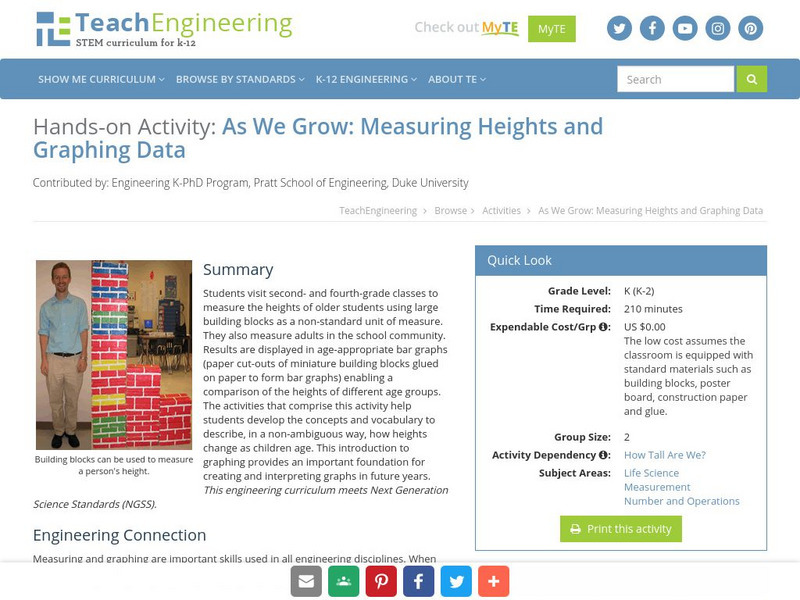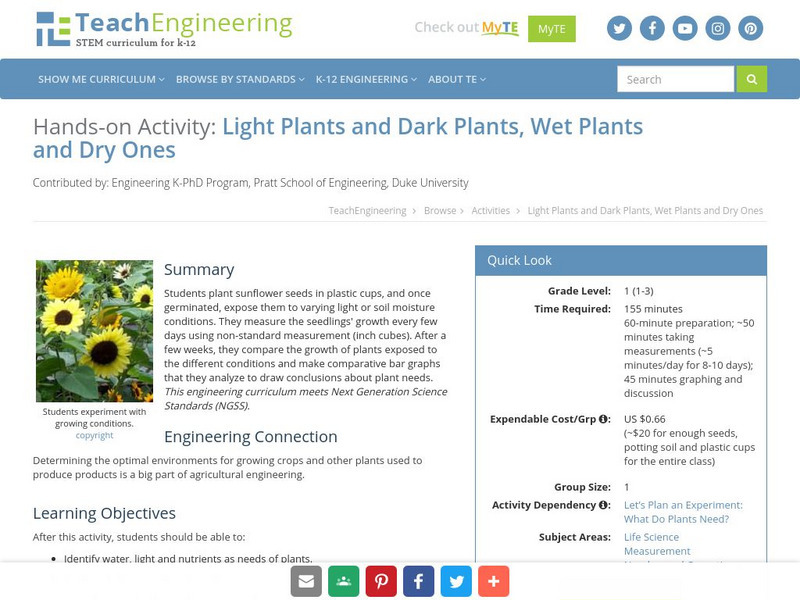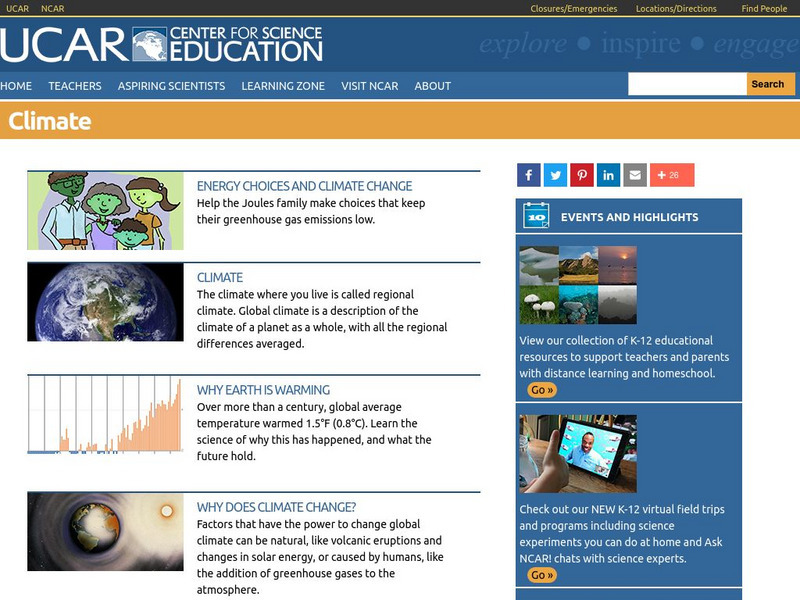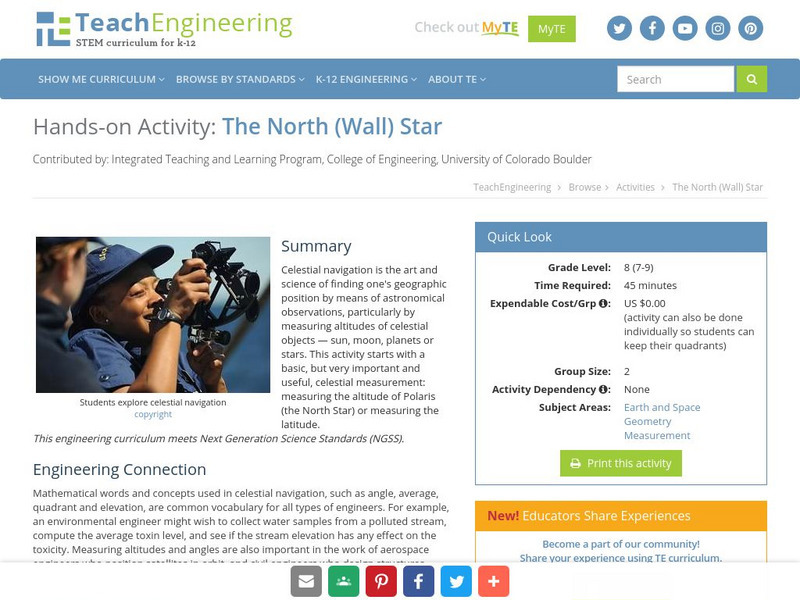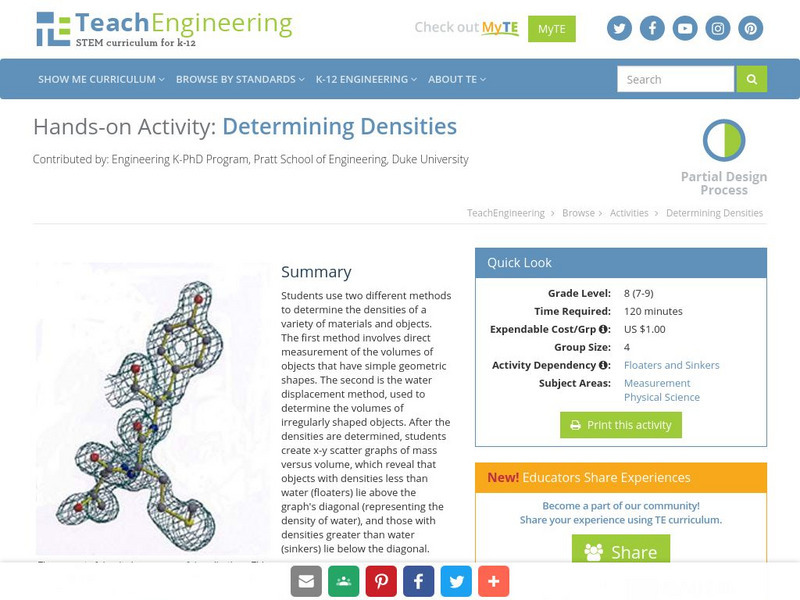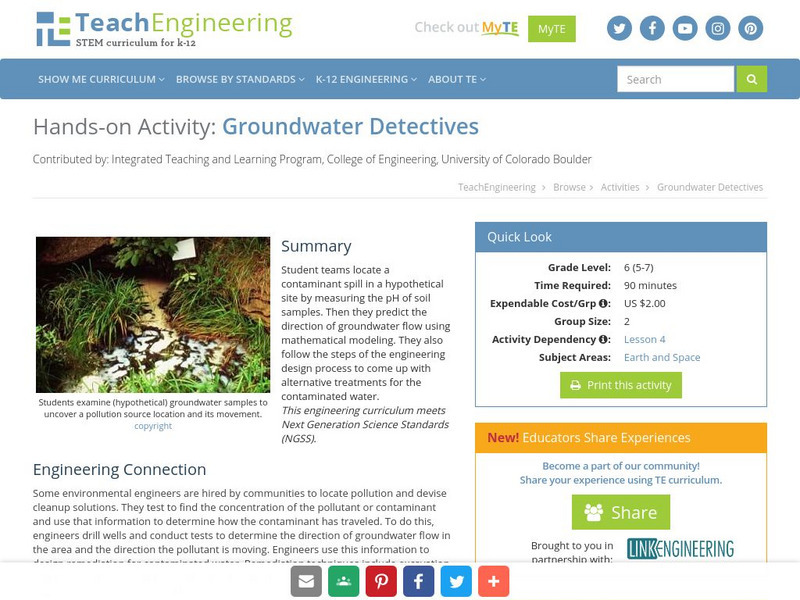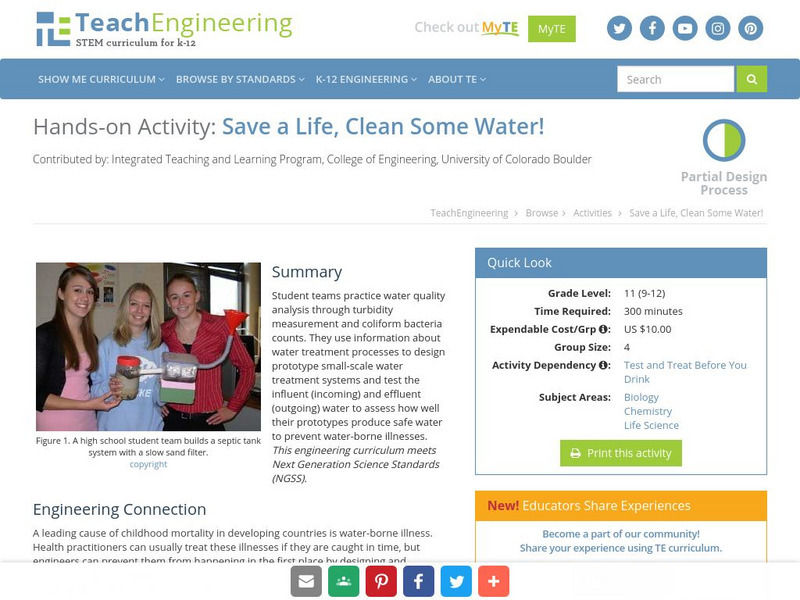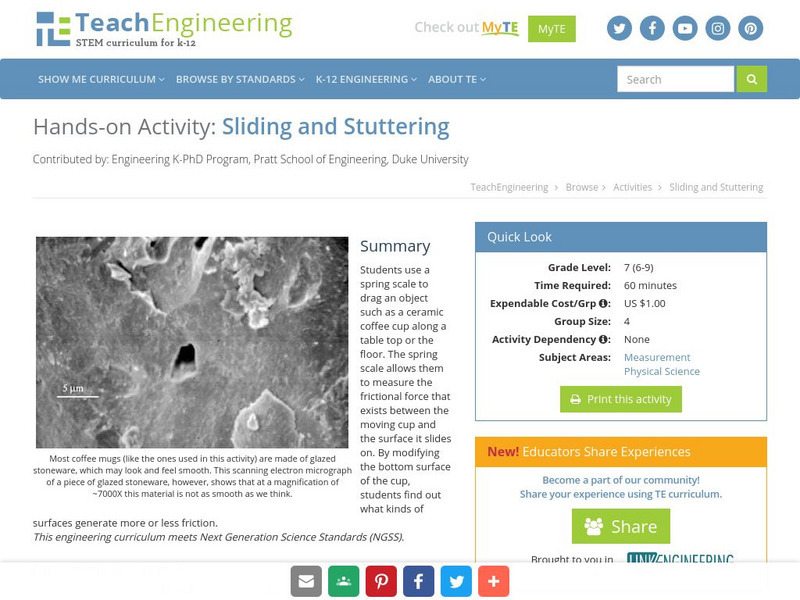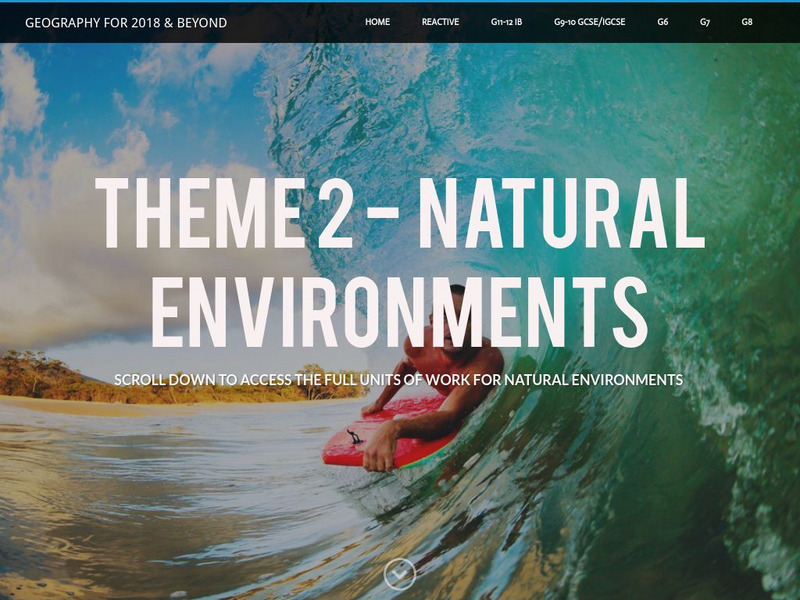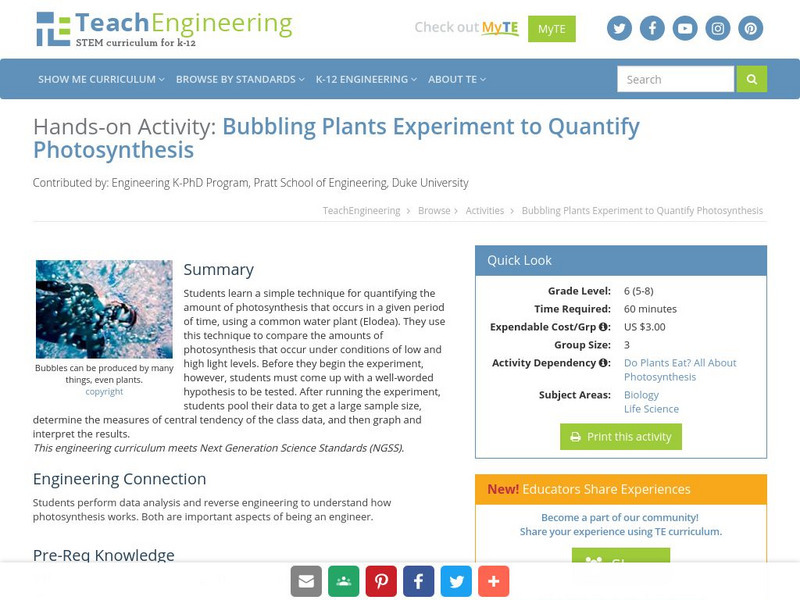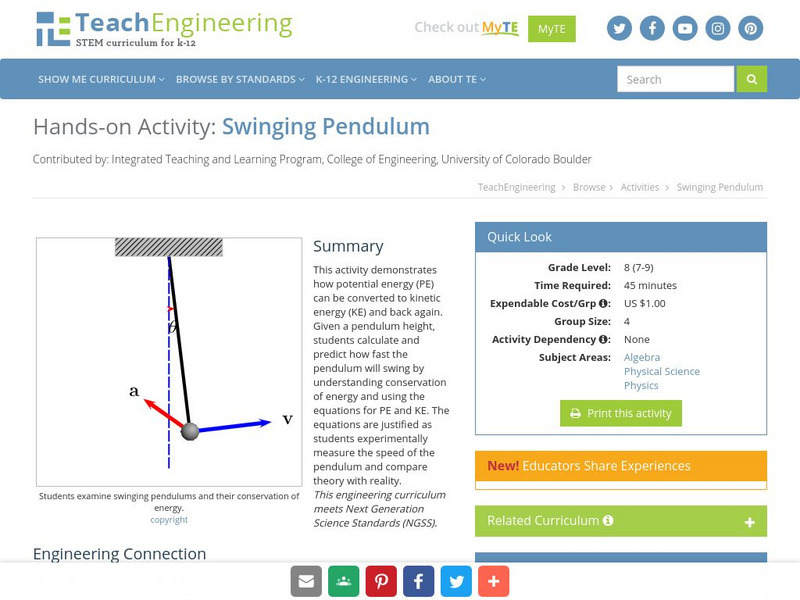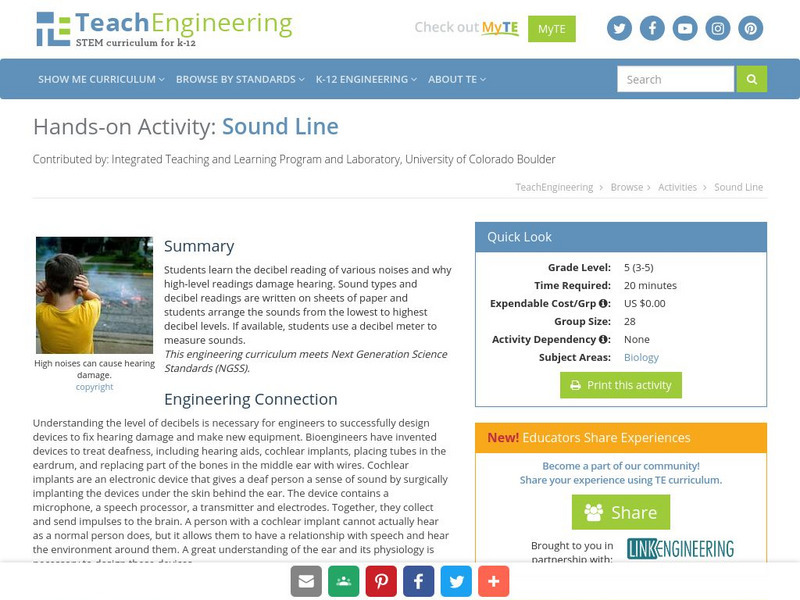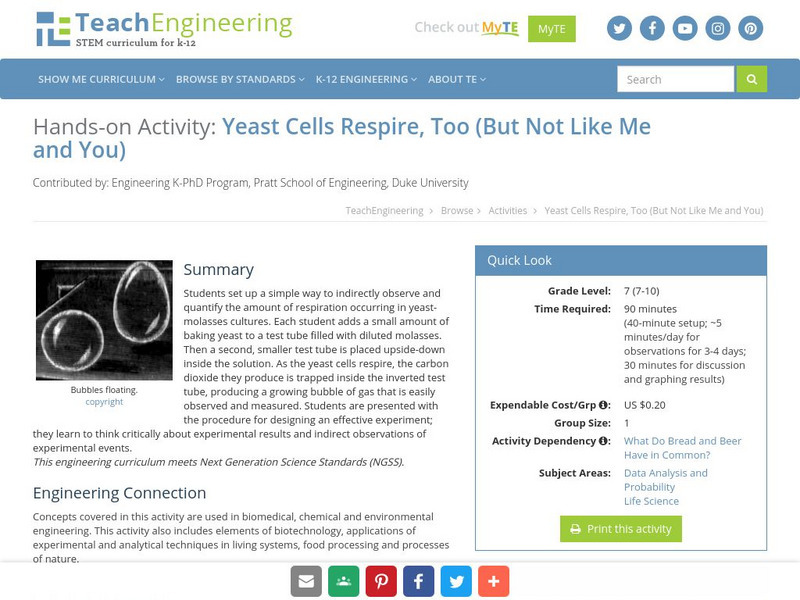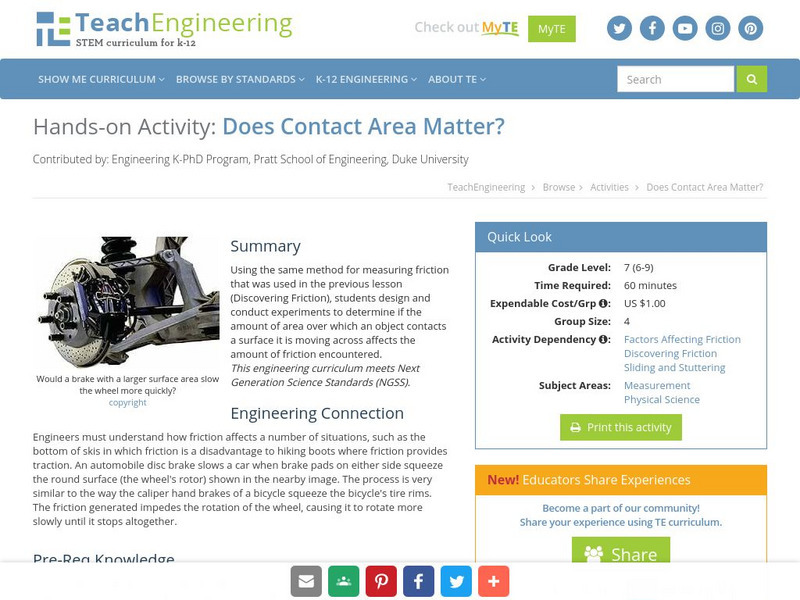Hi, what do you want to do?
PBS
Pbs Learning Media: Peg + Cat: Morning Badges Home Activity
Counting and cardinality, measurement, and measureable attributes are all discovered in this activity from Peg + Cat. Your child can earn badges as they complete a morning routine with Peg and her best friend Cat.
Other
Unavco: Measuring Plate Motion With Gps: Iceland
Students will learn about the architecture that is in place to enable GPS and how to interpret data for a station's position. They will develop a time series plot and use the data to see that the Mid-Atlantic Ridge is rifting Iceland....
Georgia Department of Education
Ga Virtual Learning: Populations, Biodiversity and Politics of Sustainability
Students explore the value of biodiversity, the impacts that humans are having on the Earth's biodiversity, and measures that can be taken to preserve biodiversity.
Concord Consortium
Concord Consortium: Measuring Voltage in Series Circuits
Measuring the voltage in a circuit is like measuring the drop in pressure across two points. Learn more with this tutorial.
Science Buddies
Science Buddies: Make a Hygrometer to Measure Humidity
Learn how to make a hygrometer to measure the humidity level in the air.
American Geosciences Institute
American Geosciences Institute: Earth Science Week: Measuring Permeabilities of Soil, Sand, and Gravel
This investigation will help students learn that different geologic materials have different characteristics.
TeachEngineering
Teach Engineering: Growing and Graphing
Students visit a 2nd and a 4th grade class to measure the heights of older students using large building blocks as a non-standard unit of measure. They can also measure adults in the school community. Results are displayed in...
TeachEngineering
Teach Engineering: Light Plants and Dark Plants, Wet Plants and Dry Ones
Students plant sunflower seeds in plastic cups, and once germinated, these are exposed to different conditions of light levels and/or soil moisture contents. During exposure of the plants to these different conditions, students measure...
University Corporation for Atmospheric Research
Ucar: Introduction to Climate
A detailed overview of the Earth's climate, with explanations about the difference between weather and climate, dendrochronology, palynology, and how Earth's climate has changed over time. All information is reinforced through pictures,...
University Corporation for Atmospheric Research
Ucar: Rain Measurements Tell a Story
Using language arts, math, and measurement skills, elementary students explore rainfall data and learn how to measure precipitation through an interactive story.
TeachEngineering
Teach Engineering: The North (Wall) Star
Celestial navigation is the art and science of finding one's geographic position by means of astronomical observations, particularly by measuring altitudes of celestial objects - sun, moon, planets or stars. This activity starts with a...
TeachEngineering
Teach Engineering: Determining Densities
Students will use two different methods to determine the densities of a variety of materials and objects. The first method involves direct measurement of the volumes of objects that have simple geometric shapes, while the second uses the...
TeachEngineering
Teach Engineering: Engineering Your Own Spectrograph
Students use simple materials to design an open spectrograph so they can calculate the angle light is bent when it passes through a holographic diffraction grating. A holographic diffraction grating acts like a prism, showing the visual...
TeachEngineering
Teach Engineering: Groundwater Detectives
Student teams locate a contaminant spill in a hypothetical site by measuring the pH of soil samples. Then they predict the direction of groundwater flow using mathematical modeling. They also use the engineering design process to come up...
TeachEngineering
Teach Engineering: Save a Life, Clean Some Water!
Student teams practice water quality analysis through turbidity measurement and coliform bacteria counts. They use information about water treatment processes to design prototype small-scale water treatment systems and test the influent...
TeachEngineering
Teach Engineering: Sliding and Stuttering
Students use a spring scale to drag an object such as a ceramic coffee cup along a table top or the floor. The spring scale allows them to measure the frictional force that exists between the moving cup and the surface it slides on. By...
PBS
Pbs: Black Kingdoms of the Nile
A geometry instructional activity that examines the history and structure of ancient pyramids and engages students in constructing pyramid models. A comprehensive instructional activity that considers students with diverse learning...
Geographypods
Geographypods: Hazards and Risk Management: Earthquakes
This learning module looks at earthquakes. It discusses areas of earthquake activity, how they are measured using the Richter scale, and how scientists try to predict earthquakes. Includes handouts, slideshows, activities, and videos.
Geographypods
Geographypods: Theme 2: Natural Environments
A rich collection of highly engaging learning modules on topics related to the natural environment. Covers four main areas - plate tectonics, forms and processes, weather and climate, and rainforest and desert. Within each of these,...
TeachEngineering
Teach Engineering: Bubbling Plants
Students learn a simple technique for quantifying the amount of photosynthesis that occurs in a given period of time, using a common water plant (Elodea). They can use this technique to compare the amounts of photosynthesis that occur...
TeachEngineering
Teach Engineering: Swinging Pendulum
This activity demonstrates how potential energy (PE) can be converted to kinetic energy (KE) and back again. Given a pendulum height, students calculate and predict how fast the pendulum will swing by understanding conservation of energy...
TeachEngineering
Teach Engineering: Sound Line
Students learn the decibel reading of various noises and why high-level readings damage hearing. Sound types and decibel readings are written on sheets of paper, and students arrange the sounds from the lowest to highest decibel levels....
TeachEngineering
Teach Engineering: Yeast Cells Respire, Too (But Not Like Me and You)
Students set up a simple way to indirectly observe and quantify the amount of respiration occurring in yeast-molasses cultures. Each student adds a small amount of baking yeast to a test tube filled with diluted molasses. A second,...
TeachEngineering
Teach Engineering: Does Contact Area Matter?
Using the same method for measuring friction that was used in the previous lesson (Discovering Friction), students design and conduct an experiment to determine if the amount of area over which an object contacts a surface it is moving...









